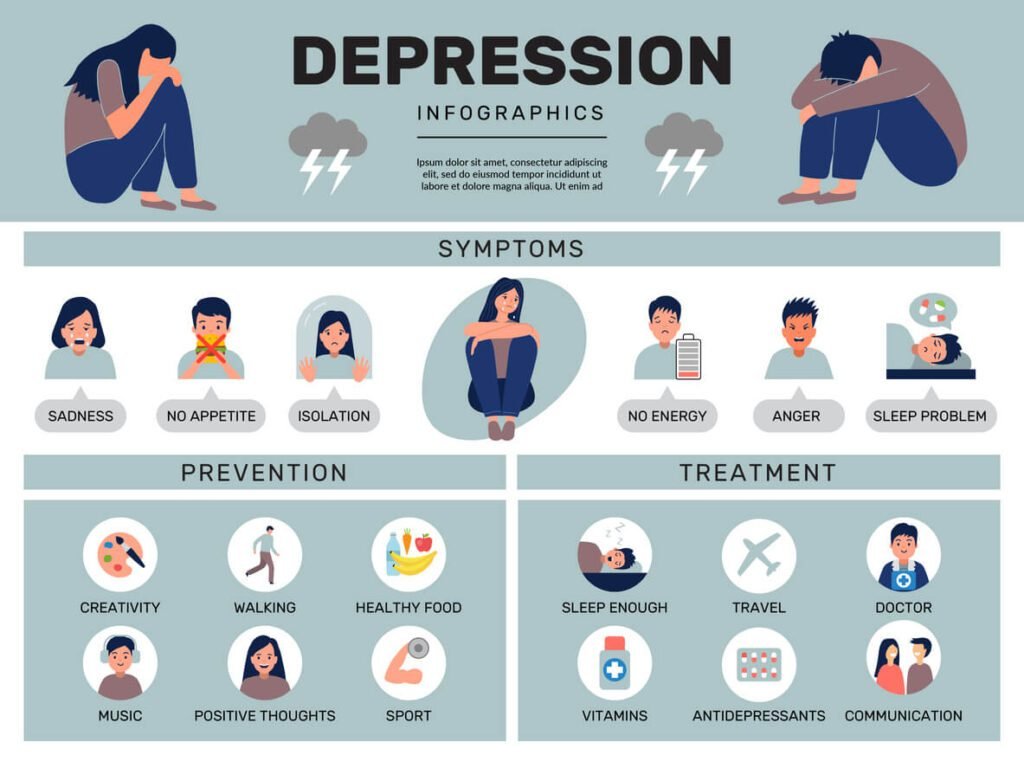Is Major Depression Painful? Understanding the Emotional and Physical Aspects
Major depression is a serious mental health condition that affects millions of people worldwide. While it is commonly known for its profound impact on emotional well-being, the question of whether major depression is painful extends beyond the realm of emotions. In this article, we will explore the complex relationship between major depression and pain, shedding light on both the emotional and physical aspects of this debilitating condition.

Overview of Major Depression:
Before delving into the pain aspect, let’s first understand what major depression entails. Major depression, also known as clinical depression, is a mental disorder characterized by persistent feelings of sadness, hopelessness, and a loss of interest in activities. It affects a person’s thoughts, emotions, and behaviors, often leading to significant impairments in daily functioning. According to the World Health Organization (WHO), major depression is one of the leading causes of disability worldwide.
The Emotional Pain of Major Depression:
Depression manifests as emotional pain, causing deep anguish and suffering. Those experiencing major depression often describe feeling overwhelmed, helpless, and trapped in a cycle of negative thoughts. Emotionally, depression may result in feelings of sadness, emptiness, and a profound loss of joy or pleasure. The impact on one’s self-esteem and self-worth can be severe, leading to a diminished sense of purpose and a constant feeling of being a burden to others.
Personal accounts and experiences of individuals with major depression further highlight the emotional pain involved. Many individuals describe the relentless heaviness that weighs upon them as if carrying an invisible burden that drains their energy and dampens their spirits. The emotional pain of major depression can be isolating, making it challenging for individuals to reach out for help or connect with others.
The Physical Pain of Major Depression:
While the focus is often on the emotional toll, this depression can also manifest as physical pain. Research suggests that individuals with depression frequently experience co-occurring physical symptoms, such as headaches, backaches, muscle pain, and gastrointestinal disturbances. This physical pain is not merely a coincidence but rather a genuine manifestation of the condition.
The relationship between depression and physical pain is complex. Depression can amplify and intensify the perception of pain, making even minor discomfort feel excruciating. Furthermore, individuals with chronic pain conditions, such as fibromyalgia or arthritis, are at a higher risk of developing major depression. The two conditions can often interact and exacerbate each other, creating a vicious cycle that negatively impacts an individual’s overall well-being.
Neurobiological Factors of Pain in Major Depression:
Neurotransmitters, the chemical messengers in our brain, play a crucial role in both pain perception and major depression. Imbalances in neurotransmitters like serotonin, norepinephrine, and dopamine can affect an individual’s sensitivity to pain and their overall mood. Moreover, structural and functional changes in the brain, including alterations in the limbic system and the prefrontal cortex, have been observed in individuals with depression and chronic pain.
The intricate relationship between neurobiology, pain, and depression suggests that these two phenomena are interconnected and mutually reinforcing. Understanding the neurobiological factors at play is crucial in developing effective treatment strategies that address both the emotional and physical aspects of this.
Watch Major Depression on YouTube:
Treatment and Management of Pain in Major Depression:
Given the multifaceted nature of this depression and its pain component, a comprehensive treatment approach is necessary. Psychological interventions, such as cognitive-behavioral therapy (CBT), can help individuals manage the emotional and physical pain associated with depression. CBT techniques can assist in identifying and challenging negative thoughts, fostering adaptive coping mechanisms, and promoting overall well-being.
Pharmacological treatments, including antidepressant medications, can also be beneficial in alleviating both depressive symptoms and pain. Selective serotonin reuptake inhibitors (SSRIs) and serotonin-norepinephrine reuptake inhibitors (SNRIs) are commonly prescribed antidepressants that can address both the emotional and physical aspects of this.
It is important to emphasize the significance of an integrated approach that combines psychological and pharmacological interventions. Such an approach recognizes the interplay between emotional and physical pain, providing a holistic treatment plan tailored to the individual’s needs.
Read Also: The Science of Depression: 5 Research-Backed Strategies to Beat Depression Helpful
Conclusion:
It is undoubtedly a painful condition, encompassing both emotional and physical aspects. The emotional pain of depression can be overwhelming, leading to feelings of despair and hopelessness. Simultaneously, the physical pain experienced by individuals with this further exacerbates their suffering. Understanding and addressing the pain aspect of major depression are crucial for developing effective treatment strategies that promote healing and recovery.
By recognizing the emotional and physical pain experienced by individuals with major depression, we can foster empathy, reduce stigma, and encourage a more compassionate approach to mental health. Together, let us work towards creating a society where individuals with this receive the support they need to heal, thrive, and reclaim their lives.




